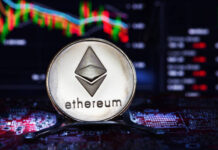Market movers today
US CPI for May is out ahead of the monetary policy decision announced tomorrow. Consensus looks for unchanged m/m core inflation of 0.4% but we see a better change that it will decline to 0.3%, not least because used car prices took a big jump in April which should not repeat in May. Headline inflation should decline to 0.2% m/m so close to be consistent with 2% annual inflation, driven by cheaper energy.
German ZEW measures analysts’ assessment of the economy and is not always the best indicator, but it can trigger market reactions from time to time. Consensus is for a slight worsening in June. We also get the more detailed final inflation data for May in Germany and Spain.
The UK labour market report is expected to show slightly higher inflation but also slightly higher wage growth in April, so could be a mixed bag for the rate outlook.
We get Norwegian GDP for April which we expect to show a contraction, but for assessing the Norwegian economy, the Regional Network report on Thursday is more important.
The 60 second overview
Risk appetite improves: Market sentiment got off to a good start this week as investors eye a pause in the Fed’s hiking cycle and inflation releases have generally surprised to the downside lately. It provides some optimism that today’s US CPI will confirm that inflation pressures are easing.
China cuts rates: The People’s Bank of China (PBOC) overnight cut the repo rate by 10bp from 1.9% to 2.0. The CNH weakened in response and Chinese equities and metals prices saw a small lift adding to gains seen over the past two weeks. While monetary easing has been expected, the repo rate cut came slightly earlier than most expected as repo rate changes normally coincide with changes in the rate on the Medium Lending Facility, which will be set on Thursday. It sends a clear signal policy makers are now ready to step in to add stimulus to underpin the economy after recent data has disappointed. We are likely to see other stimulus measures soon but we expect the overall amount of new stimulus to be moderate and mostly aimed at avoiding a new downturn rather than giving a big boost to the economy.
Oil prices fall: Oil prices slipped yesterday towards recent lows around USD72 (Brent spot) even as risk sentiment was on the positive side. It seems fair to conclude by now that the decision by Saudi Arabia to slash another 1mb/d of its oil production in July has failed to stabilise the market. Instead, continued selling of strategic reserves may be what is depressing oil prices currently. There has also been speculation about a US-Iran nuclear deal drawing closer although officials on both sides have denied this. European natural gas prices on the other hand have started to rise again, albeit only modestly. The European natural gas price was normalised in real terms this year, so a small rise should not cause panic. In particular since natural gas storages are more than 70% full already. Still the natural gas market remains fragile as imports are much lower now and demand increasingly dependent on the weather due to the volatility of renewable energy production; hence, it might not take a lot for the market to start tightening again.
Equities: Global equities higher yesterday in a strong growth, quality, and cyclical lead rally. No major news out justifying the magnitude of this risk-on mode but the absence of bad news fostering renewed risk taking and investors giving up on their underweight position. The pain trade has been up this year and risk is that it will continue until we get much weaker job data, or a new tail risk threat arises. Bears should not count on inflation or central banks. Inflation is heading lower and central banks are getting closer to pausing, both supporting equity risk taking. In US yesterday, Dow +0.6%, S&P 500 +0.9%, Nasdaq +1.5% and Russell 2000 +0.4%. Rally continues this morning in Asian with Japanese markets once again leading the region higher. Futures in Europe are in solid green while US futures are higher not to the same extent as in Europe.
FI: There was a modest decline in global bond yields yesterday as well as another spread tightening between the periphery and core-EU. The 10Y spread between Italy and Germany has tightened to 165bp and is now at the tightest level since the start of the year. This is despite the expected reduction in the TLTROs, higher funding rates, QT and the possibility of a hawkish ECB on Thursday.
FX: It has been a fairly slow start to the week in FX markets with the drop in oil taking centre stage. This has put notable pressure on the NOK with EUR/NOK back above 11.60 whilst also CHF and GBP have had a weak start to the weak. EUR/USD remains little changed heading into the next couple of important sessions with US CPI today and both Fed (Wednesday) and ECB meetings (Thursday) later in the week.
Credit: The primary market activity slowed down somewhat during the start of the week as investors await decisions from the Fed and ECB on interest rates. The secondary market saw relatively limited news and credit spreads barely moved on Monday where iTraxx Main widened 1bp to 78bp while iTraxx Xover widened 2bp to 410bp.
Nordic macro
Norwegian GDP for April is the main Nordic release today. We expect it to show a contraction, but the Regional Network report on Thursday will be more important to assess the state of the Norwegian economy.











